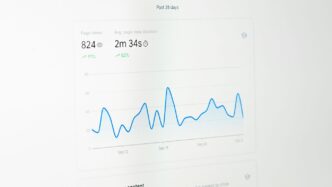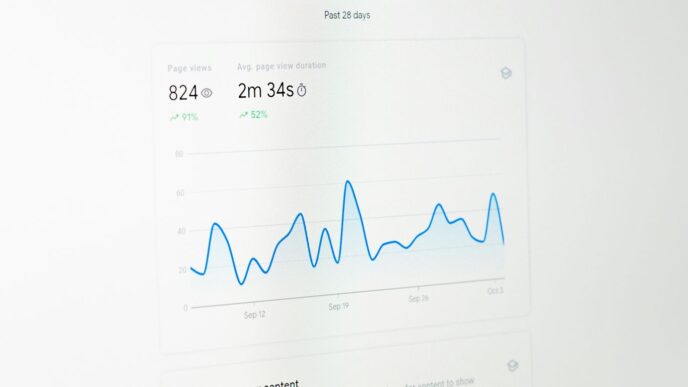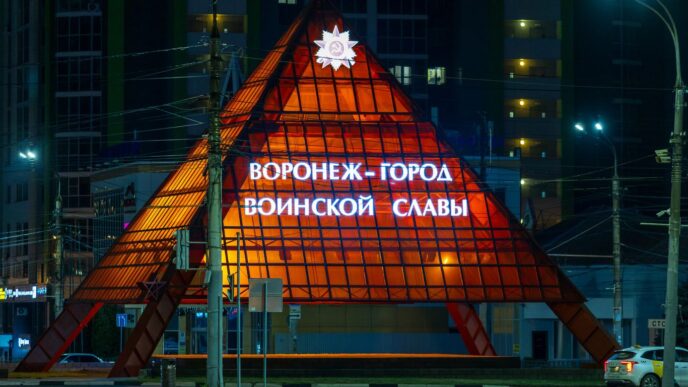Thinking about a tech career in San Francisco for 2025? It’s a big move, and the city’s tech scene is always changing. We’ve seen some shifts, like fewer layoffs but still a lot of people looking for jobs. The good news is, there are new areas popping up with lots of chances to get in. It’s a different landscape than a few years ago, with office spaces sitting empty and a real focus on finding the right talent. This guide breaks down what you need to know about the san francisco tech companies, from job trends to getting around and landing that dream role.
Key Takeaways
- The San Francisco tech job market is seeing fewer layoffs but still has a high office vacancy rate, creating a unique environment for job seekers.
- Emerging fields like AI, cloud computing, and cybersecurity are hot spots for new opportunities and in-demand skills in 2025.
- Networking events like TechCrunch Disrupt and San Francisco Design Week are prime spots to connect with industry players and potential employers.
- Relocating to San Francisco involves planning for visa requirements, using public transport, and budgeting for a high cost of living.
- Success in the 2025 recruitment process hinges on showcasing practical skills, project results, and adaptability, alongside strong technical and soft skills.
San Francisco Tech Landscape: A 2025 Overview
Alright, let’s talk about what’s happening with tech in San Francisco as we head into 2025. It’s definitely a different scene than a few years ago, that’s for sure. We’ve seen some big shifts, but there’s still a ton of energy here.
Key Employment Trends and Layoff Slowdown
So, the big news is that while there were a lot of job cuts a couple of years back – we’re talking tens of thousands – the pace has really slowed down. It’s not like the weekly free-for-all of layoffs we saw in 2022 and 2023. Things are stabilizing, which is good news for anyone looking to get into or stay in the industry. Tech jobs still make up a pretty significant chunk of the overall jobs in the Bay Area, way more than the national average. This means that even with the adjustments, San Francisco remains a major hub for tech careers.
Emerging Fields Driving New Opportunities
What’s really interesting is where the new jobs are popping up. Forget just general software development; companies are hiring like crazy for people who know their stuff in areas like AI and machine learning. Cloud computing is still huge, and cybersecurity is more important than ever. Think about it: with all the data flying around, keeping it safe and making sense of it is a big deal. These aren’t just buzzwords; these are the areas where companies are putting their money and looking for talent.
Office Vacancy Rates and Talent Dominance
Now, about those empty offices. Yeah, there are a lot more empty desks than there used to be. The vacancy rate is way up compared to just a few years ago. This might sound like bad news, but it’s actually created a bit of a power shift. Companies are still competing fiercely for the best people, and San Francisco still has a massive pool of incredibly skilled tech workers. It’s a bit of a mixed bag – lots of space, but still a huge demand for top talent, especially in those specialized fields we just talked about.
Top San Francisco Tech Companies and Culture
Giants and Startups Shaping Innovation
San Francisco is still the place to be if you’re into tech, no question. We’re talking about over 8,900 tech companies calling this city home, from the massive players you’ve heard of to the brand-new startups just getting off the ground. It’s a real mix, and that’s part of what makes it so interesting. Big names like Salesforce are still here, setting a pretty high bar for what a tech company can be. They’re known for actually caring about their employees, offering things like wellness programs and help with education. It’s not just about the bottom line for them, which is a good sign for the whole scene.
Company Culture and Employee Perks
When you’re looking at companies in San Francisco, the culture really matters. It’s not just about the salary anymore, though that’s still important. Companies are competing for talent, and that means they’re offering more than just a paycheck. Think about things like flexible work hours, good health insurance – UCSF Medical Center and California Pacific Medical Center are top-notch facilities, by the way – and even support for continuing education. Some places are really pushing for a better work-life balance, which is a big deal when you’re living in a city with a high cost of living. It’s about finding a place where you feel valued and can actually grow.
Specialized Roles and Flexible Work
The job market here is definitely shifting. While there have been some layoffs, the pace has slowed down, and new areas are popping up. AI and machine learning are huge, and companies are looking for people with those skills. Cybersecurity is another big one. What’s also interesting is how many jobs are now remote-friendly – we’re seeing a lot of positions that offer flexibility. This means you can potentially work for a San Francisco company without actually living in the city, which opens up a lot of possibilities. It’s a good idea to keep an eye on what skills are in demand, especially in these growing fields, and how companies are structuring their work arrangements.
Networking and Professional Events in 2025
Alright, so you’re looking to break into or advance within San Francisco’s tech scene in 2025? You absolutely have to get out there and meet people. It’s not just about what you know, but who you know, and these events are your golden ticket.
TechCrunch Disrupt: A Premier Gathering
This is the big one. TechCrunch Disrupt is happening October 27-29 at Moscone West, and it’s where you’ll find thousands of founders, investors, and tech enthusiasts all under one roof. It’s a fantastic place to make connections that could actually lead somewhere. They always have some big names speaking – think industry leaders and successful startup folks. Plus, the Startup Battlefield is always a highlight, where new companies pitch their ideas. It’s a great way to see what’s new and exciting.
San Francisco Design Week Integration
Keep an eye out for San Francisco Design Week, usually in early June. This event is cool because it bridges the gap between tech and design. You’ll see how creative thinking plays a role in product development and innovation. It’s a different vibe than a pure tech conference, and you might meet people from design backgrounds who have totally different, but equally useful, perspectives. Seriously, mixing with designers can spark some really interesting ideas for your own projects.
Startup Battlefield Showcasing Innovation
While often part of larger events like TechCrunch Disrupt, the Startup Battlefield deserves its own mention. This is where you see the raw, early-stage innovation happening. Watching these startups present their pitches and compete for prizes gives you a real sense of the market’s direction and the problems people are trying to solve. It’s a good place to get inspired and maybe even spot the next big thing before anyone else does. It’s not just about the competition; it’s about the energy and the ideas being thrown around.
Navigating Relocation and Cost of Living
Moving to San Francisco for a tech gig in 2025 is a big deal, and honestly, it requires some serious thought about a few key things. Let’s break down what you need to consider before packing your bags.
Visa Considerations for Foreign Tech Workers
If you’re coming from outside the U.S., figuring out your visa situation is step one. The H-1B visa is the most common route for skilled workers, but it’s competitive. There’s an annual limit, and it often gets filled up fast. For those with advanced degrees from U.S. institutions, there’s a slightly larger pool. Another option to look into is the O-1 visa, which is for individuals with extraordinary ability. It can be pricier and take a couple of months to process, but it’s a path some take. It’s worth looking into the specifics for your visa options early on.
Public Transportation and Commuting Options
Getting around San Francisco without a car is totally doable, and honestly, probably less stressful than dealing with parking. The city has a pretty decent public transit system. You’ve got buses, light rail, and those famous cable cars. A monthly transit pass will run you somewhere in the ballpark of $80-$100, which is way cheaper than paying for parking every day. If you’re into cycling, there are bike lanes, but be warned, those hills are no joke! Many tech workers find living in areas like SoMa or the Mission District makes their commute a bit easier since they’re closer to many company offices.
Neighborhoods and Budgeting for SF Living
Okay, let’s talk about the elephant in the room: the cost of living. San Francisco is famously expensive, and housing is the biggest chunk of that. Expect to pay around $3,300 or more for a one-bedroom apartment. Utilities add another few hundred bucks each month. Even a simple meal out can cost $25. While some reports suggest housing costs might stabilize a bit, it’s still a major expense. Popular neighborhoods like Mission Bay are attractive with new buildings and a good vibe, but they come with a premium price tag. It’s really important to create a detailed budget before you make the move. Factor in rent, utilities, food, transportation, and those little extras that always seem to pop up. Smart financial planning is key to making it work.
Preparing for the San Francisco Recruitment Process
Getting ready for job hunting in San Francisco’s tech world in 2025 is a big deal, but with a solid plan, it’s totally doable. Lots of folks worry about the economy affecting their search, and yeah, that’s a valid concern. But honestly, the best thing you can do is focus on what companies actually want. They’re looking for people who can not only code or crunch numbers but also figure out tricky problems and work well with others. It’s less about just having a fancy degree and more about showing what you can build and achieve.
Showcasing Practical Skills and Project Results
This is where you really shine. Instead of just listing responsibilities on your resume, show what you did and what happened because of it. Think about projects you’ve worked on, whether for school, a personal passion, or a previous job. Did you improve a website’s speed? By how much? Did your app get more users? Quantify it! Employers want to see concrete results. A good place to show this off is your GitHub profile or a personal website. Make sure your code is clean and your project descriptions are clear. Demonstrating tangible outcomes from your work is key to standing out.
Employer Demand for Technical and Soft Skills
Companies here are really after a mix. Of course, they need strong technical chops – think coding languages, cloud platforms, or data analysis tools. But don’t forget the ‘soft’ skills. Being able to communicate your ideas clearly, collaborate with a team, and adapt to new challenges are just as important. Many roles now require you to understand how different technologies fit together, so being a quick learner is a big plus. It’s a competitive market, but having both sets of skills makes you a much more attractive candidate.
Building a Strong Online Portfolio
Your online presence is basically your digital handshake. A well-organized portfolio, whether it’s a personal website or a curated GitHub repository, acts as a living resume. It’s where recruiters and hiring managers can see your skills in action. Include a variety of projects if possible, showing different aspects of your abilities. Make sure it’s easy to navigate and highlights your best work. Don’t forget to include a clear ‘About Me’ section and your contact information. This is your chance to make a great first impression before you even get an interview.
In-Demand Tech Skills and Roles for 2025
The tech job market in San Francisco is always moving, and 2025 is no different. Companies are really looking for people who can do more than just code; they want problem-solvers who can adapt. The focus has definitely shifted towards practical skills that make a real difference for businesses. It’s not just about knowing a tool, but how you use it to fix something.
AI/ML, Cloud Computing, and Cybersecurity Expertise
Artificial Intelligence and Machine Learning are huge right now. Think about it – AI is showing up everywhere. Companies need folks who understand the basics of AI and ML, not just the buzzwords. This means knowing how to work with tools like TensorFlow or PyTorch and understanding how to build models that actually do something useful. Cloud computing is also non-negotiable. Platforms like Amazon Web Services (AWS), Microsoft Azure, and Google Cloud are the backbone of most tech operations. If you don’t know at least one of these inside and out, you’re going to have a tough time. Cybersecurity is another big one. With more data online than ever, protecting that information is a top priority. Jobs in this area are growing fast, and they often pay pretty well. It’s about keeping systems safe from threats, which is a pretty big deal.
Software Engineering and Data Science Roles
Software engineering is still a core need, but the game has changed a bit. Companies are looking for full-stack developers who can handle both the front-end and back-end of applications. Being able to build something from start to finish is a big plus. Data science is also booming. Businesses are drowning in data and need people who can make sense of it all. This means being good with languages like Python and SQL, and knowing how to use tools to analyze information and find trends. The ability to explain what the data means to people who aren’t tech experts is also super important.
Sustainable AI Development and Emerging Technologies
Beyond the big three, there’s a growing interest in how we develop AI responsibly. This means thinking about fairness, bias, and the environmental impact of AI models. It’s a newer area, but one that’s gaining traction. Also, keep an eye on things like blockchain, especially in areas like decentralized finance (DeFi) and smart contracts. While maybe not as widespread as AI, these technologies are carving out their own niches. The ability to work with containerization tools like Kubernetes and understand DevOps practices is also becoming standard for many roles, not just specialized ones. It’s all about building and deploying software more efficiently.
Here’s a quick look at some key areas:
- AI/ML: Building models, prompt engineering, AI ethics.
- Cloud Computing: AWS, Azure, Google Cloud proficiency, serverless architecture.
- Cybersecurity: Threat detection, network security, data privacy.
- Software Engineering: Full-stack development, mobile apps, API design.
- Data Science: Data analysis, machine learning, data visualization, SQL, Python.
- Emerging Tech: Blockchain, sustainable tech practices, DevOps.
Wrapping It Up: Your 2025 San Francisco Tech Journey
So, looking ahead to 2025, San Francisco’s tech world is definitely a place of change, but that’s kind of its thing, right? We’ve seen a big shift towards skills in areas like AI and cloud computing, and companies are really looking for people who can actually do the work, not just talk about it. Layoffs have slowed down, and while office spaces are emptier, the talent pool here is still top-notch. Remember, staying curious and keeping your skills sharp is the name of the game. Whether you’re aiming for a big company or a hot startup, the opportunities are there if you’re ready to put in the effort and show what you’ve got. It’s a dynamic scene, for sure, but that’s what makes it exciting.
Frequently Asked Questions
What’s the San Francisco tech job market like in 2025?
The tech scene in San Francisco is changing a lot. While there were many job cuts recently, the number of layoffs is slowing down. New jobs are popping up in areas like artificial intelligence (AI), computer security, and new kinds of computing. Even though many office buildings are empty, San Francisco still has the most tech talent, and people here make more money than in other tech cities. It’s a mix of challenges and chances, with remote work and new tech changing things.
Which tech jobs are most popular in San Francisco for 2025?
Companies are really looking for people good at AI and machine learning, cloud computing, and cybersecurity. Jobs like software engineers and data scientists are still in high demand. There’s also a growing need for people who can develop AI in a way that’s good for the environment and uses less energy. Learning how to use tools like TensorFlow and Python is super important.
How can I get ready for a tech job interview in San Francisco?
To get ready, you need to show what you can actually do, not just what you know. Share examples of projects you’ve worked on and show the good results you got, like making things work better or getting more people to use something. Employers want to see that you have both tech skills and can solve problems creatively. Keep your skills up-to-date and show off your work on websites like GitHub or a personal portfolio.
What are the best ways to connect with people in the San Francisco tech world?
Going to industry events is a great way to meet people. TechCrunch Disrupt is a big conference where lots of startups and investors gather. San Francisco Design Week also brings together tech and design folks. These events are perfect for meeting people who could help your career. Showing up and actually talking to people is key.
What should I think about if I want to move to San Francisco for a tech job?
Moving to San Francisco needs planning. If you’re not from the U.S., you’ll need to figure out visa rules, like the H-1B visa, which is hard to get. Getting around the city is easier with public transport, which is cheaper than paying for parking. You’ll also need to budget carefully because living in San Francisco is expensive, especially rent. Think about neighborhoods that are close to tech companies but also fit your budget.
Are companies in San Francisco still offering flexible work options?
Yes, flexible work is still a big deal. Many workers prefer to split their time between working at home and in the office. While the exact percentage can change, a large number of candidates look for jobs that offer some form of remote or hybrid work. It’s a good idea to mention your preference for flexible arrangements during the job search.














